Setting Process Monitoring of Cement Paste Using Electromechanical Impedance of Piezoelectric Patch
Abstract
:1. Introduction
2. Materials and Methods
3. Results and Discussions
3.1. Admittance of PZT
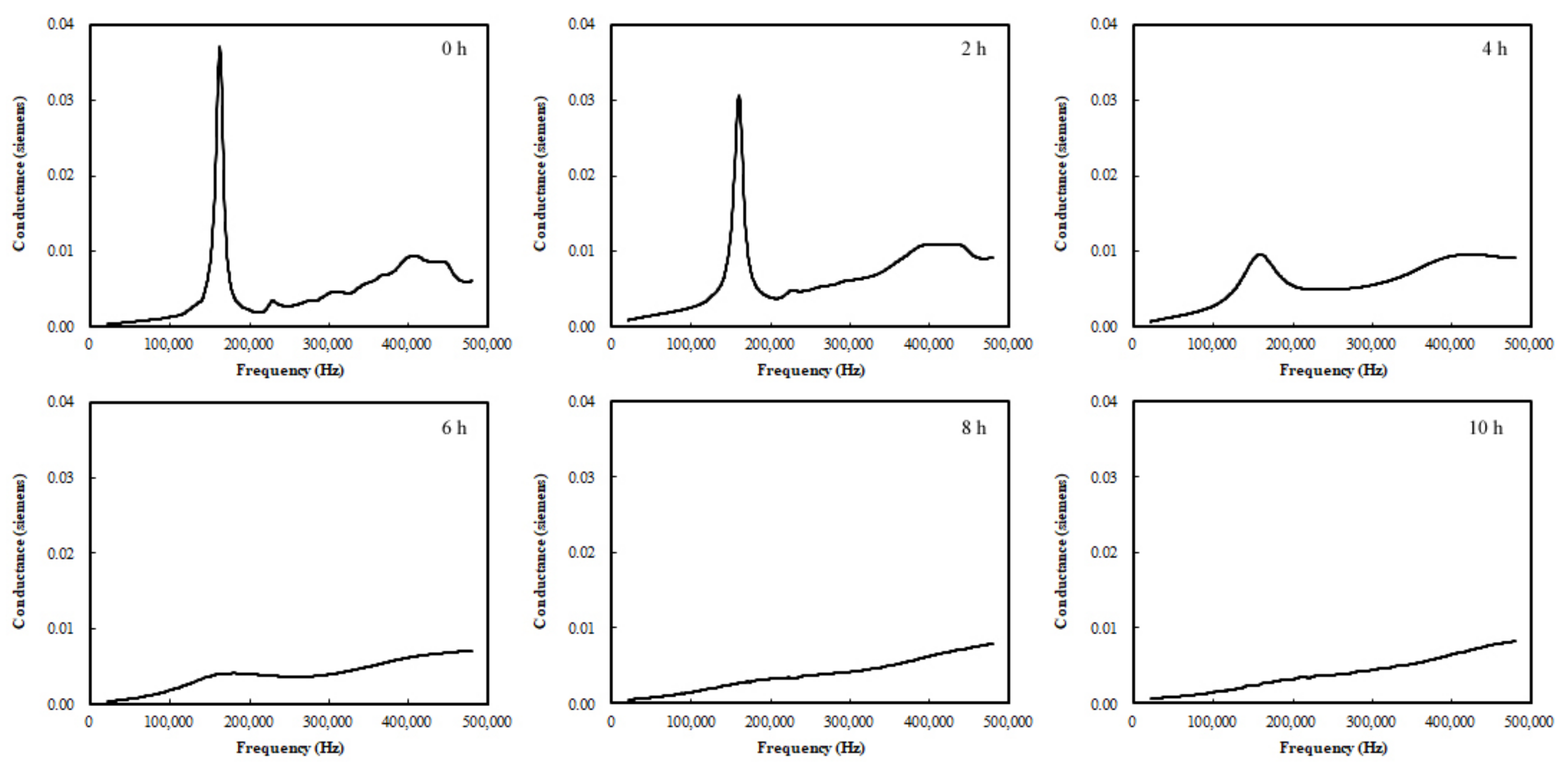
3.2. Metrics for Evaluating PZT Admittance Change
- (A)
- 0–2 h—gradual changes;
- (B)
- 2–4 h—rapid changes;
- (C)
- 4–6 h—approaching the steady state;
- (D)
- beyond 6 h—remains in the steady state.
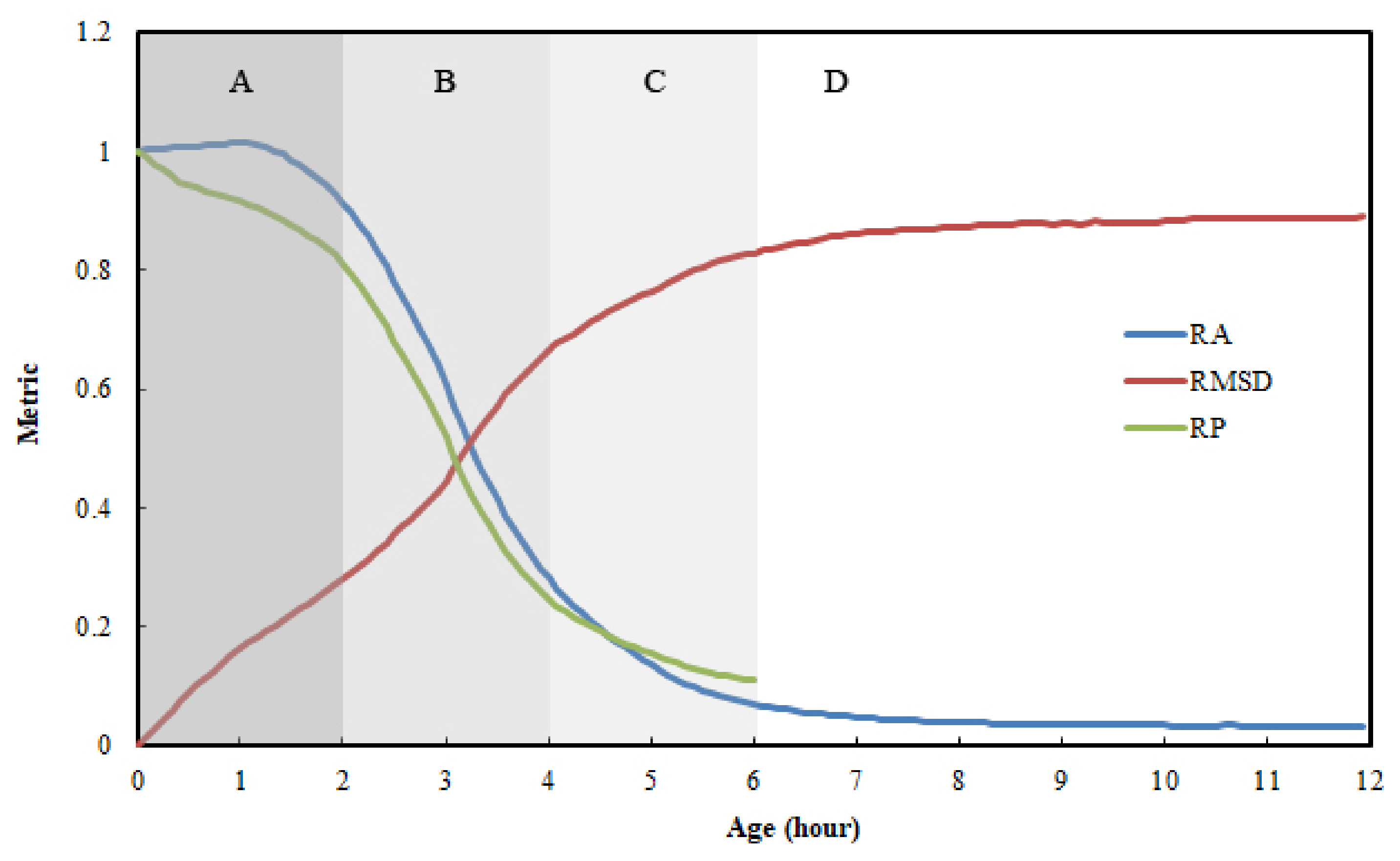
4. Conclusions
Author Contributions
Funding
Institutional Review Board Statement
Informed Consent Statement
Data Availability Statement
Conflicts of Interest
References
- Mindess, S.; Young, J.F. Concrete; Prentice-Hal: Hoboken, NJ, USA, 1981. [Google Scholar]
- ASTM C191-21; Standard Test Methods for Time of Setting of Hydraulic Cement by Vicat Needle. ASTM International: West Conshohocken, PA, USA, 2021.
- ASTM C403/C403M-16; Standard Test Method for Time of Setting of Concrete Mixtures by Penetration Resistance. ASTM International: West Conshohocken, PA, USA, 2016.
- Zhang, S.; Zhang, Y.; Li, Z. Ultrasonic monitoring of setting and hardening of slag blended cement under different curing temperatures by using embedded piezoelectric transducers. Constr. Build. Mater. 2018, 159, 553–560. [Google Scholar] [CrossRef]
- Rozsypalová, I.; Karel, O.; Kucharczyková, B.; Kocáb, D.; Halamová, R. Monitoring of the Setting and early Hardening with Ultrasonic Waves. Key Eng. Mater. 2018, 776, 51–54. [Google Scholar] [CrossRef]
- Bhalla, N.; Sharma, S.; Sharma, S.; Siddique, R. Monitoring early-age setting of silica fume concrete using wave propagation techniques. Constr. Build. Mater. 2018, 162, 802–815. [Google Scholar] [CrossRef]
- Yousuf, F.; Wei, X.; Zhou, J. Monitoring the setting and hardening behaviour of cement paste by electrical resistivity measurement. Constr. Build. Mater. 2020, 252, 118941. [Google Scholar] [CrossRef]
- Thirumalaiselvi, A.; Sasmal, S. Acoustic emission monitoring and classification of signals in cement composites during early-age hydration. Constr. Build. Mater. 2019, 196, 411–427. [Google Scholar] [CrossRef]
- Wang, D.; Yu, G.; Liu, S.; Sheng, P. Monitoring the Setting Process of Cementitious Materials Using Guided Waves in Thin Rods. Materials 2021, 14, 566. [Google Scholar] [CrossRef] [PubMed]
- Reinhardt, H.W.; Grosse, C.U.; Herb, A.T. Ultrasonic monitoring of setting and hardening of cement mortar—A new device. Mater. Struct. 2000, 33, 581–583. [Google Scholar] [CrossRef]
- Öztürk, T.; Kroggel, O.; Grübl, P.; Popovics, J.S. Improved Ultrasonic Wave Reflection Technique to Monitor the Setting of Cement-Based Materials. NDT&E Int. 2006, 39, 258–263. [Google Scholar]
- Azenha, M.; Magalhães, F.; Faria, R.; Cunha, Á. Measurement of Concrete E-modulus Evolution Since Casting: A Novel Method Based on Ambient Vibration. Cement. Concr. Res. 2010, 40, 1096–1105. [Google Scholar] [CrossRef]
- Shin, S.W.; Qureshi, A.R.; Lee, J.Y.; Yun, C.B. Piezoelectric Sensor Based Nondestructive Active Monitoring of Strength Gain in Concrete. Smart Mater. Struct. 2008, 17, 055002. [Google Scholar] [CrossRef]
- Shin, S.W.; Oh, T.K. Application of Electro-mechanical Impedance Sensing Technique for Online Monitoring of Strength Development in Concrete Using Smart PZT patches. Constr. Build. Mater. 2009, 22, 1185–1188. [Google Scholar] [CrossRef]
- Tawie, R.; Lee, H.K. Piezoelectric-based Non-destructive Monitoring of Hydration of Reinforced Concrete as an Indicator of Bond Development at the Steel-Concrete Interface. Cem. Concr. Res. 2010, 40, 1697–1703. [Google Scholar] [CrossRef]
- Liang, C.; Sun, F.; Rogers, C.A. Electro-mechanical Impedance Modeling of Active Material Systems. Smart Mater. Struct. 1996, 5, 171–186. [Google Scholar] [CrossRef]
- Lee, C.J.; Lee, J.C.; Shin, S.W.; Kim, W.J. Investigation of setting process of cementitious materials using electromechanical impedance of embedded piezoelectric patch. J. Korea Inst. Build. Constr. 2012, 12, 607–614. [Google Scholar] [CrossRef] [Green Version]
- Lee, J.C.; Shin, S.W.; Kim, W.J.; Lee, C.J. Electro-mechanical impedance based monitoring for the setting of cement paste using piezoelectricity sensor. Smart Struct. Syst. 2016, 17, 123–134. [Google Scholar] [CrossRef]
- Bansal, T.; Talakokula, V.; Mathiyazhagan, K. Equivalent structural parameters based non-destructive prediction of sustainable concrete strength using machine learning models via piezo sensor. Measurement 2022, 187, 110202. [Google Scholar] [CrossRef]
- Zhang, C.; Panda, G.P.; Yan, Q.; Zhang, W.; Vipulanandan, C.; Song, G. Monitoring early-age hydration and setting of portland cement paste by piezoelectric transducers via electromechanical impedance method. Constr. Build. Mater. 2020, 258, 120348. [Google Scholar] [CrossRef]
- Lee, J.C.; Lee, C.J. Electro-Mechanical Impedance Technique for Assessing the Setting Time of Steel-Fiber-Reinforced Mortar Using Embedded Piezoelectric Sensor. Appl. Sci. 2022, 12, 3964. [Google Scholar] [CrossRef]
- ASTM C305-14; Standard Practice for Mechanical Mixing of Hydraulic Cement Pastes and Mortars of Plastic Consistency. ASTM International: West Conshohocken, PA, USA, 2014.
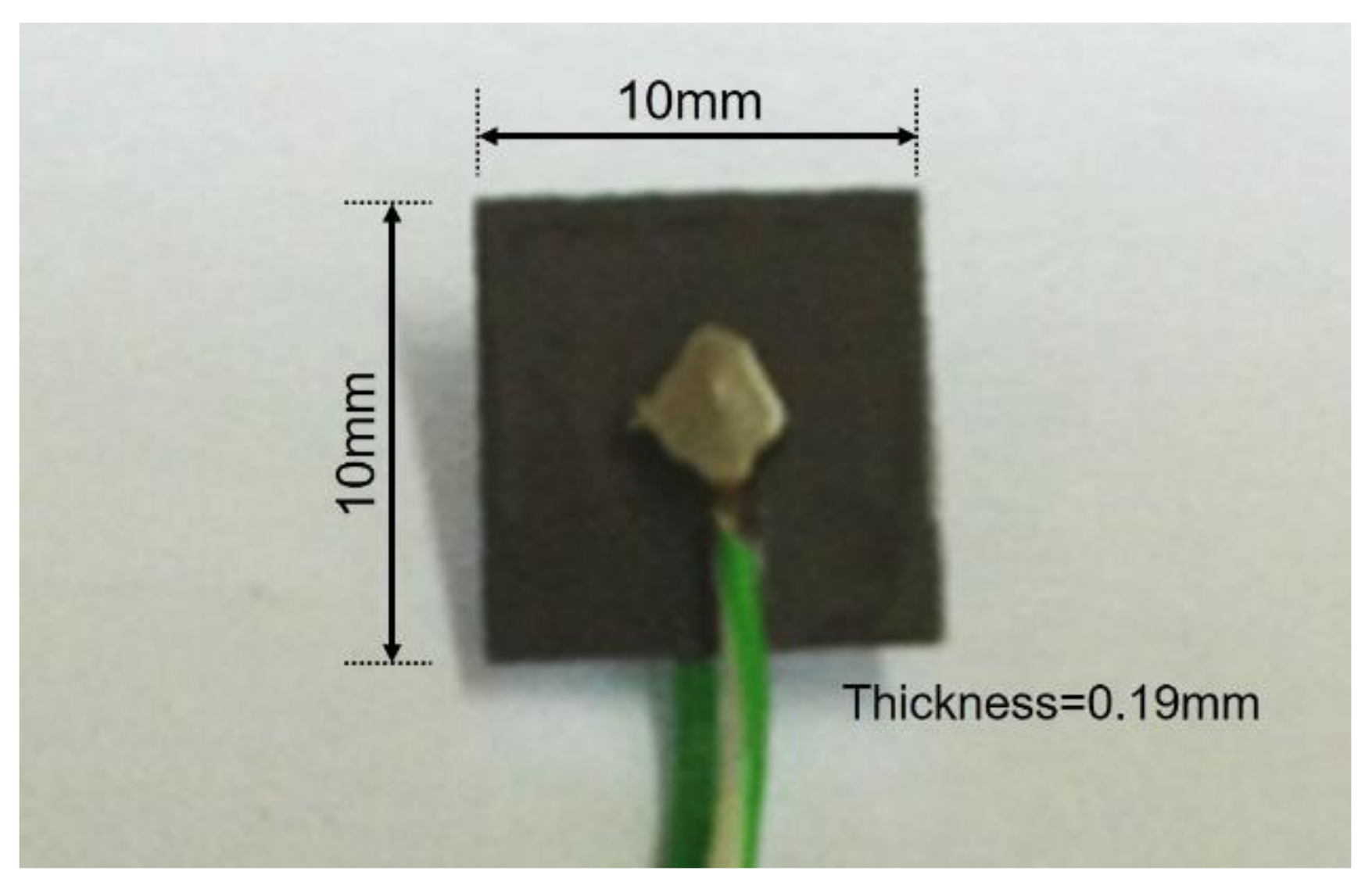
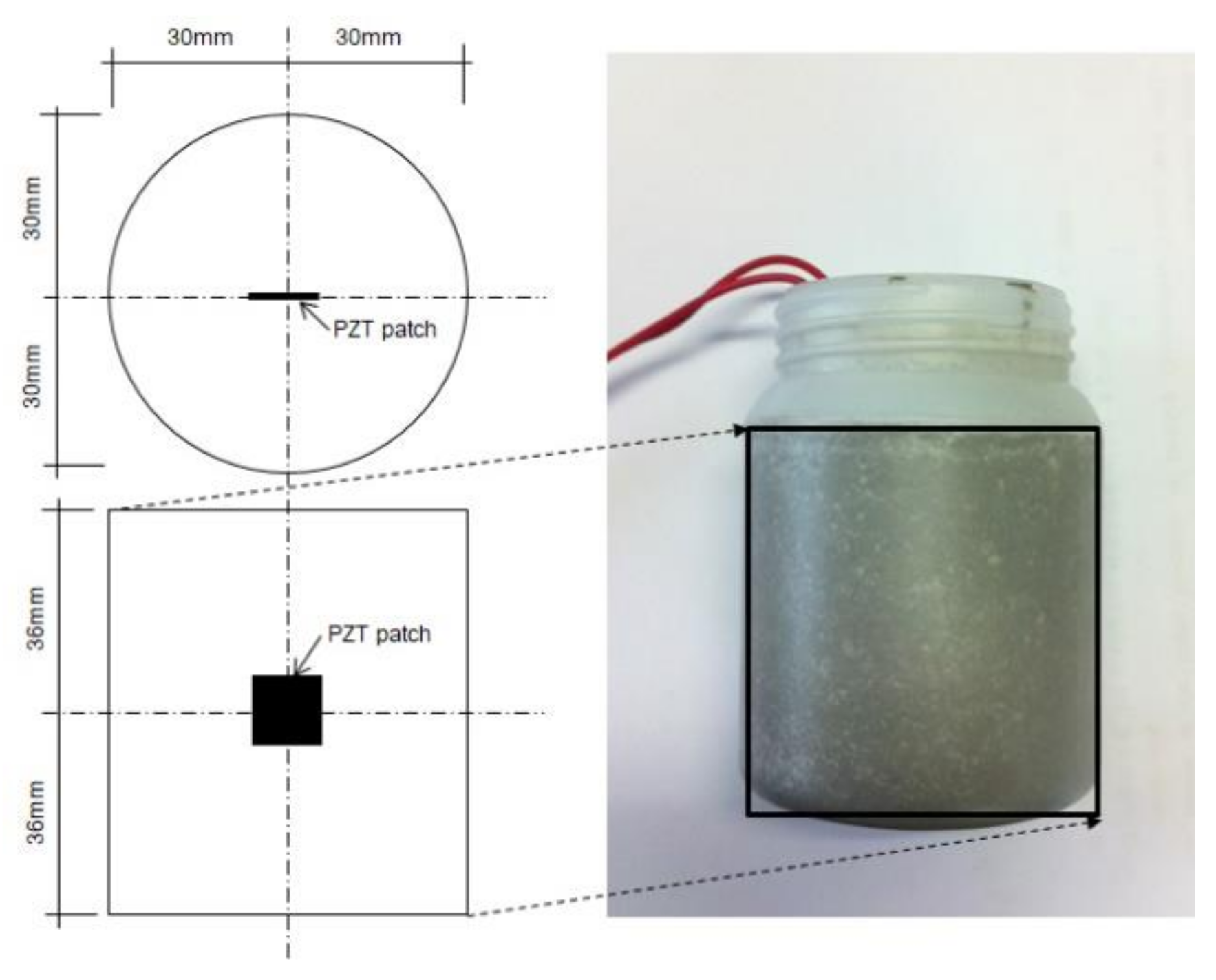

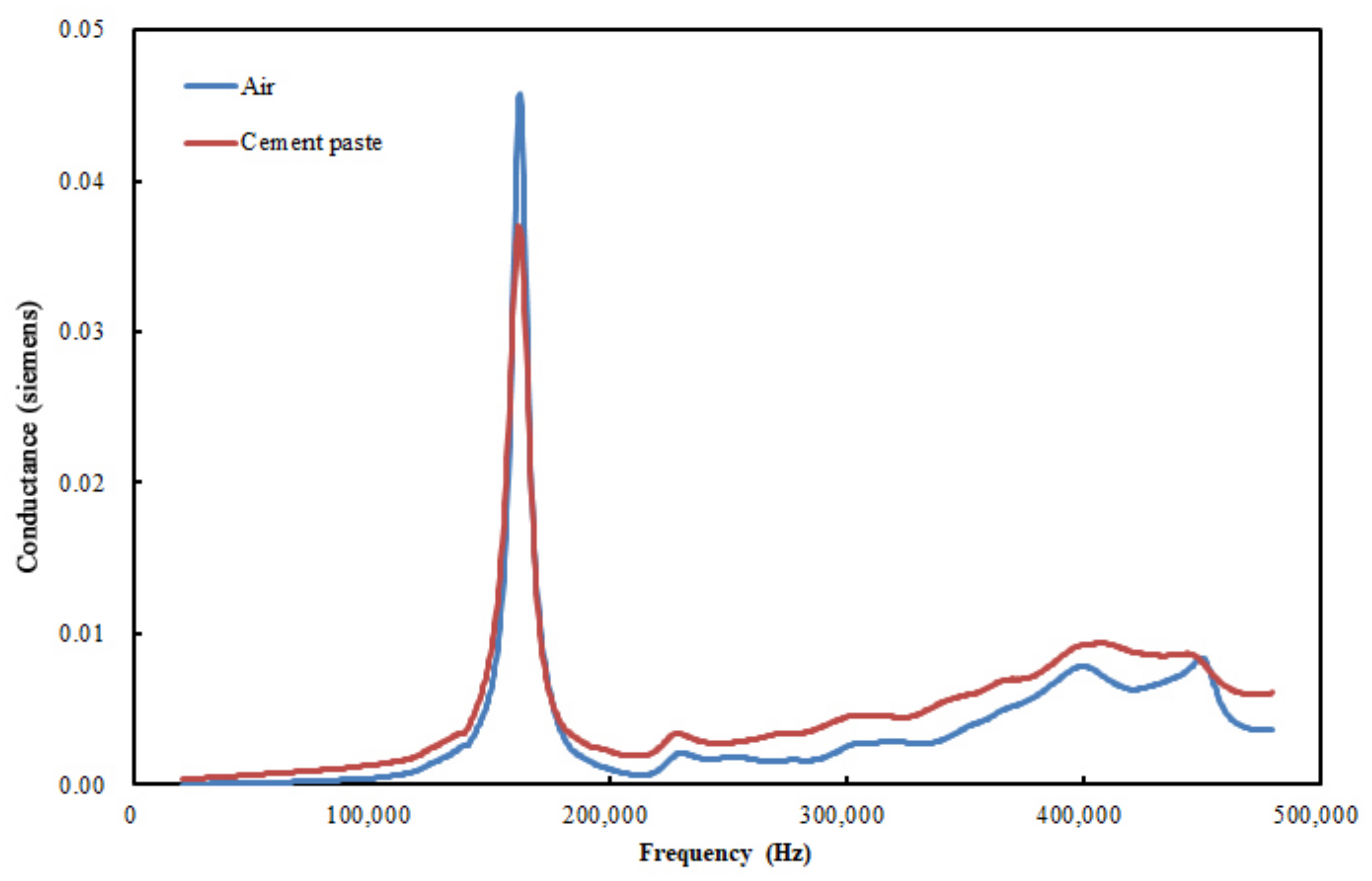
Publisher’s Note: MDPI stays neutral with regard to jurisdictional claims in published maps and institutional affiliations. |
© 2022 by the authors. Licensee MDPI, Basel, Switzerland. This article is an open access article distributed under the terms and conditions of the Creative Commons Attribution (CC BY) license (https://creativecommons.org/licenses/by/4.0/).
Share and Cite
Lee, J.-C.; Yi, C.-Y. Setting Process Monitoring of Cement Paste Using Electromechanical Impedance of Piezoelectric Patch. Materials 2022, 15, 8114. https://doi.org/10.3390/ma15228114
Lee J-C, Yi C-Y. Setting Process Monitoring of Cement Paste Using Electromechanical Impedance of Piezoelectric Patch. Materials. 2022; 15(22):8114. https://doi.org/10.3390/ma15228114
Chicago/Turabian StyleLee, Jun-Cheol, and Chang-Yong Yi. 2022. "Setting Process Monitoring of Cement Paste Using Electromechanical Impedance of Piezoelectric Patch" Materials 15, no. 22: 8114. https://doi.org/10.3390/ma15228114





